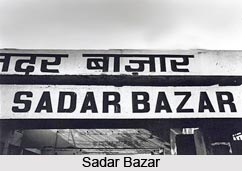 Nabi Qadi Hamid al-din Masjid is situated in Kharadi area near Sadar Bazar in Rajasthan. According to history the mosque and its mihrab had been constructed towards the end of 13th century or the beginning of the 14th century. It is believed that the Sultan al-Tarikin built the mosque.
Nabi Qadi Hamid al-din Masjid is situated in Kharadi area near Sadar Bazar in Rajasthan. According to history the mosque and its mihrab had been constructed towards the end of 13th century or the beginning of the 14th century. It is believed that the Sultan al-Tarikin built the mosque.
Architecture of Nabi Qadi Hamid al-din Mosque
Nabi Qadi Hamid al-din Mosque is one of the impressive monuments of Muslim period. The mosque has a flat roofed columned prayer hall that measures 5 x 10 metres. It has two aisles and five inlets that extend to a courtyard located on the east side. In comparison to the other bays, the central bay is somewhat wider. The side bays are narrower. The mosque has square shafts that are simple and narrow and measures 25 x 25 cms. The building was later repaired and renovated during which its floors were raised and the bases of the columns were concealed. There is a rectangular mirab that has been projected in the wall at the back. Towards the north of the mirab a minar has been built of three stone steps. The northern side of the wall has two windows. Later a flat roof along with eave stones and a parapet were added in the 17th century. The set up of the supporting columns suggest that the original roof also had been flat. Recently the south western corner of the prayer hall had been divided and a chamber has been built on the south west corner of the mosque. An attractive arch has been carved between the columns. The most important feature of the Nabi Qadi Hamid al-din Mosque is the beautifully designed columns that was in practise during the reign of the Khiliji Dynasty. In Gujarat this style was adopted by the monuments of the 14th and 15th centuries. In Nagaur the similar pattern was found in the Shams Khan Masjid. The mihrab of the mosque is adorned with an ogee arch on stone pilasters. It is designed with roundels in the spandrels. The arc is semi circular in design and resembles the mihrab of the mosque of Makhdum Husain. The mirab is simple in design and has no inscriptions.
An inscription of a Persian prose has been carved on the Nabi Qadi Hamid al-din Mosque. It dates 2nd Dhu`l-Hijja 1047/17th April and has been engraved above the mihrab. The inscription belongs to the time of the Mughal emperor, Shah Jahan. It states about date of the restoration of the mosque and its founder, `Sultan al-Tarikin Qadi Hamid al-din Nagauri.` Nabi Qadi Hamid al-din Mosque thus, can be regarded as the only 13th century structure in Nagaur and one of the first Islamic buildings of the town.





















